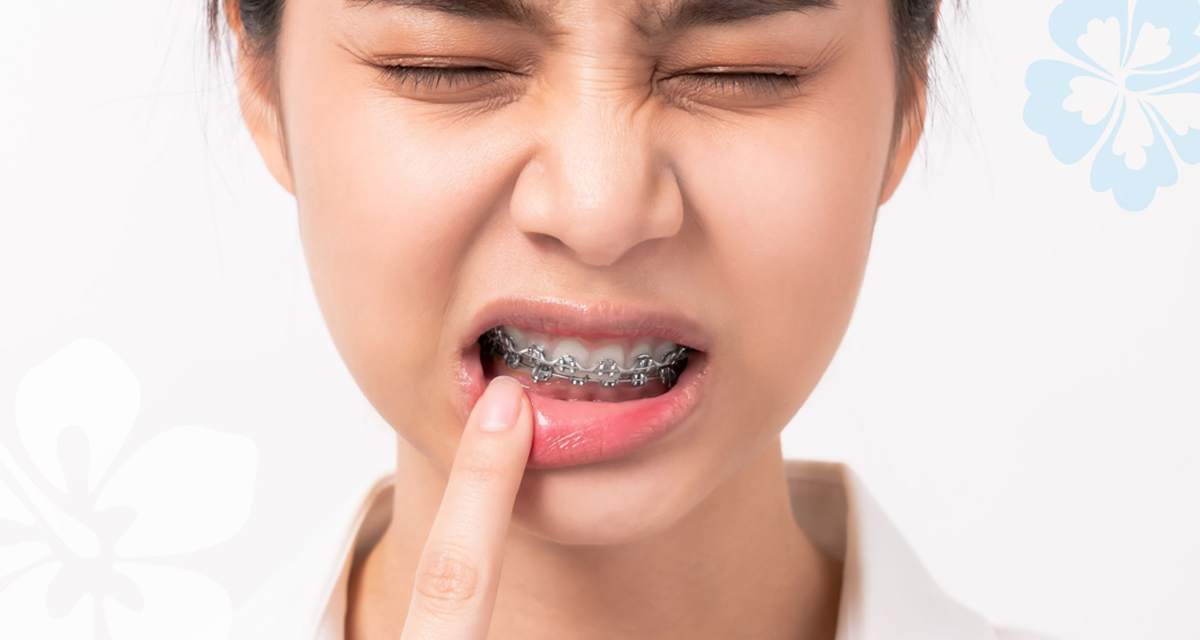One of the most common questions from people seeking straighter teeth and an improved smile is, “Do braces hurt?” Learning how braces treatment works, along with the finer details of the application process, will help you better understand why your mouth feels the way it does and how to deal with any discomfort until it subsides. If you’re still worried about potential pain from braces, there are also other teeth straightening treatments to consider.
Do Braces Hurt?
The simple answer is no, braces treatment is not painful. However, braces can be mildly uncomfortable and cause a bit of soreness, especially at first. Such discomfort is not a cause for concern as your treatment begins, and it is manageable for most people. If you’re feeling severe discomfort later in your braces treatment that is not precipitated by an adjustment by your orthodontist, though, you will want to schedule an appointment to ensure there isn’t an issue.
Normal discomfort comes from the application of the braces, the reaction of the soft tissues in the mouth to the presence of braces, and then from the pressure the braces exert on the teeth. This pressure causes the bone around the tooth’s root to break down on one side while new bone forms on the other side to fill in the gap. This allows the tooth to move into a new position. This pressure is more noticeable at some times during the treatment process than at others.
Let’s examine the various points during the treatment process where you may feel some mild discomfort.
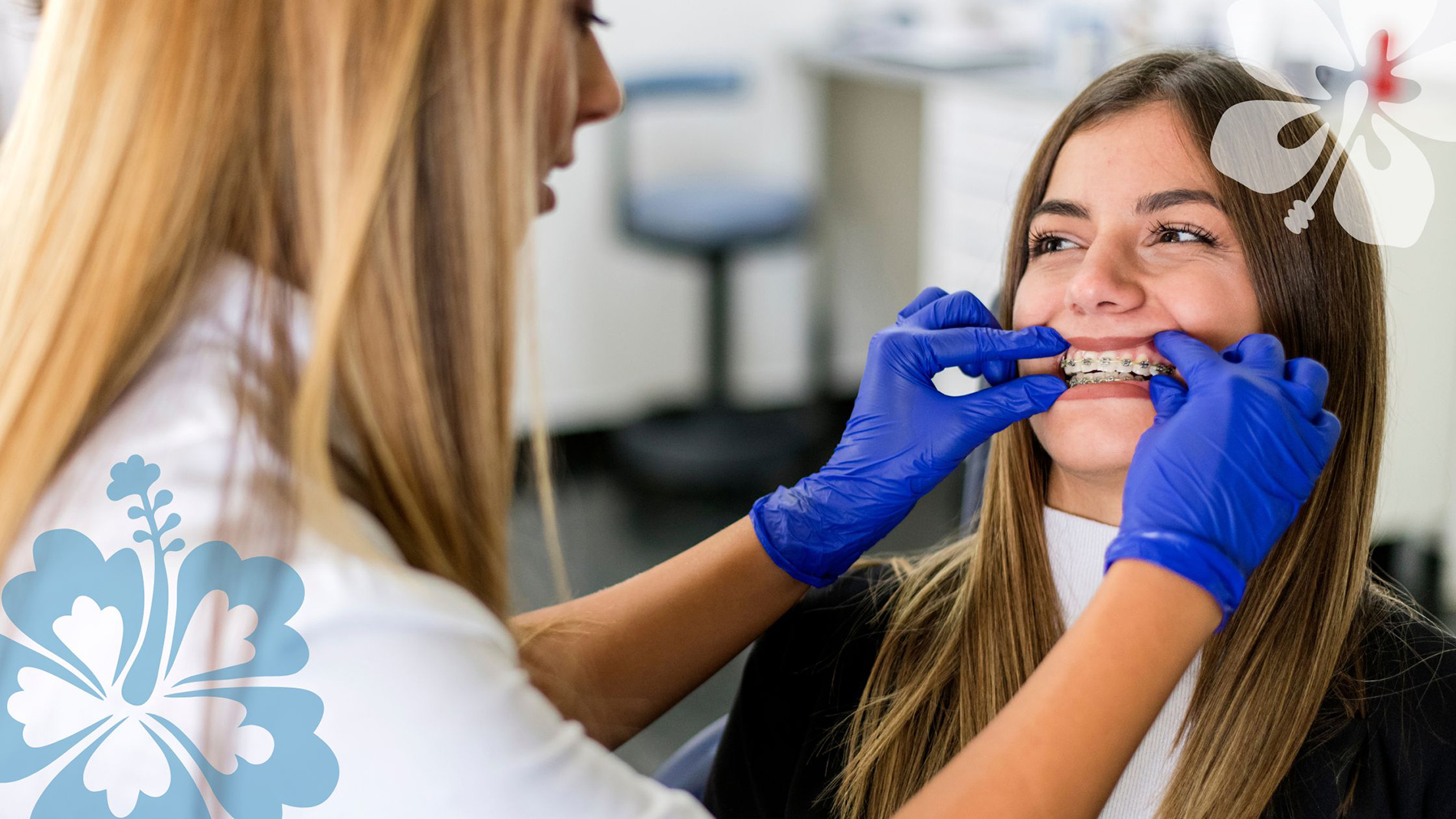
Discomfort During Application
The application process begins when an orthodontist places a special medical-grade glue on your teeth, followed by a bracket on each tooth. Then, a metal archwire is threaded through them and secured with tiny elastic bands. The process usually takes 1-2 hours.
Overall the application procedure is not painful, but you will feel pressure on your teeth when the brackets are pressed down and as the archwire is threaded. Some people may find having their mouth open for a long time as uncomfortable as well. Generally, this discomfort should resolve itself within a day or two.
Discomfort Immediately After Application
After the braces are applied, some discomfort is normal. Braces work by applying pressure to straighten your teeth, and your teeth, soft tissue, and gums need time to adapt to this new sensation.
It is common to experience these potentially uncomfortable sensations in the first week or two of your braces treatment:
- Pressure on your teeth
- Swollen or inflamed gums
- Irritated lips, gums, or cheeks,
- Tension in your jaw
- Headaches
- Sensitivity to heat or cold
- Difficulty chewing food
Most people find that the discomfort goes away within the first few days as your mouth adjusts to the new braces.
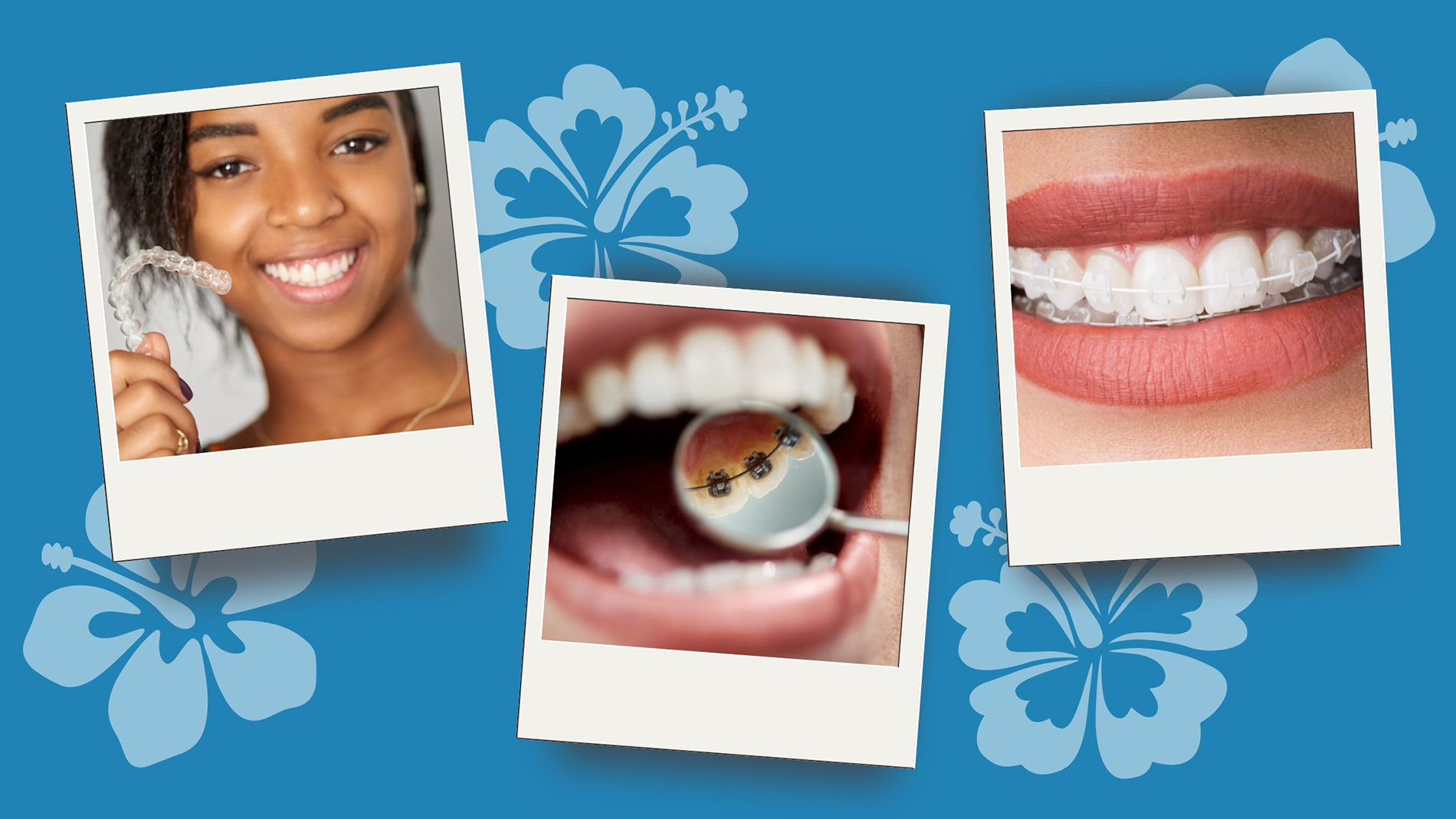
Can Different Types of Braces Help with Discomfort?
There are several types of braces available, each with different benefits to fit your age, aesthetics, personal expression, and lifestyle. Popular types of braces are metallic, ceramic, and lingual braces.
Metallic braces are the most commonly applied type of orthodontic apparatus and are known as traditional braces. These metallic braces are what usually come to mind when you think of braces. They’re affordable, reliable, and high-quality.
Ceramic braces are a lot like traditional metal braces, but instead of using metal, they are made from clear ceramic brackets that nicely blend in with the color of teeth. As this makes them less obvious, they are chosen by people who want a more discreet orthodontic treatment. However, their function and placement means they don’t cause any more or less discomfort than traditional metal braces.
Lingual braces are similar to ceramic and metallic braces but are placed on the inside of the teeth. These can be a discreet option that gives you the functionality of metal braces without the look. Lingual braces are harder to care for due to their position, and adjustment appointments can take longer. However, they may not cause cheek discomfort.
How Long Will My Teeth Hurt After Braces Are Put On?
How long you will feel discomfort or soreness after getting braces is different for everyone. Normally, you can expect discomfort to subside within a week as your mouth adjusts to the new orthodontic appliances. Be sure to follow the care instructions from your orthodontist to help minimize discomfort and ensure a smooth transition into life with braces.
During Treatment
After your braces are applied, you will need to visit the orthodontist regularly every 4-6 weeks. Your braces will be tightened, and archwire and rubber brands will be replaced with new ones if necessary. With tightening, you may experience discomfort similar to when your braces were put on, but the sensation usually goes away after a few days.
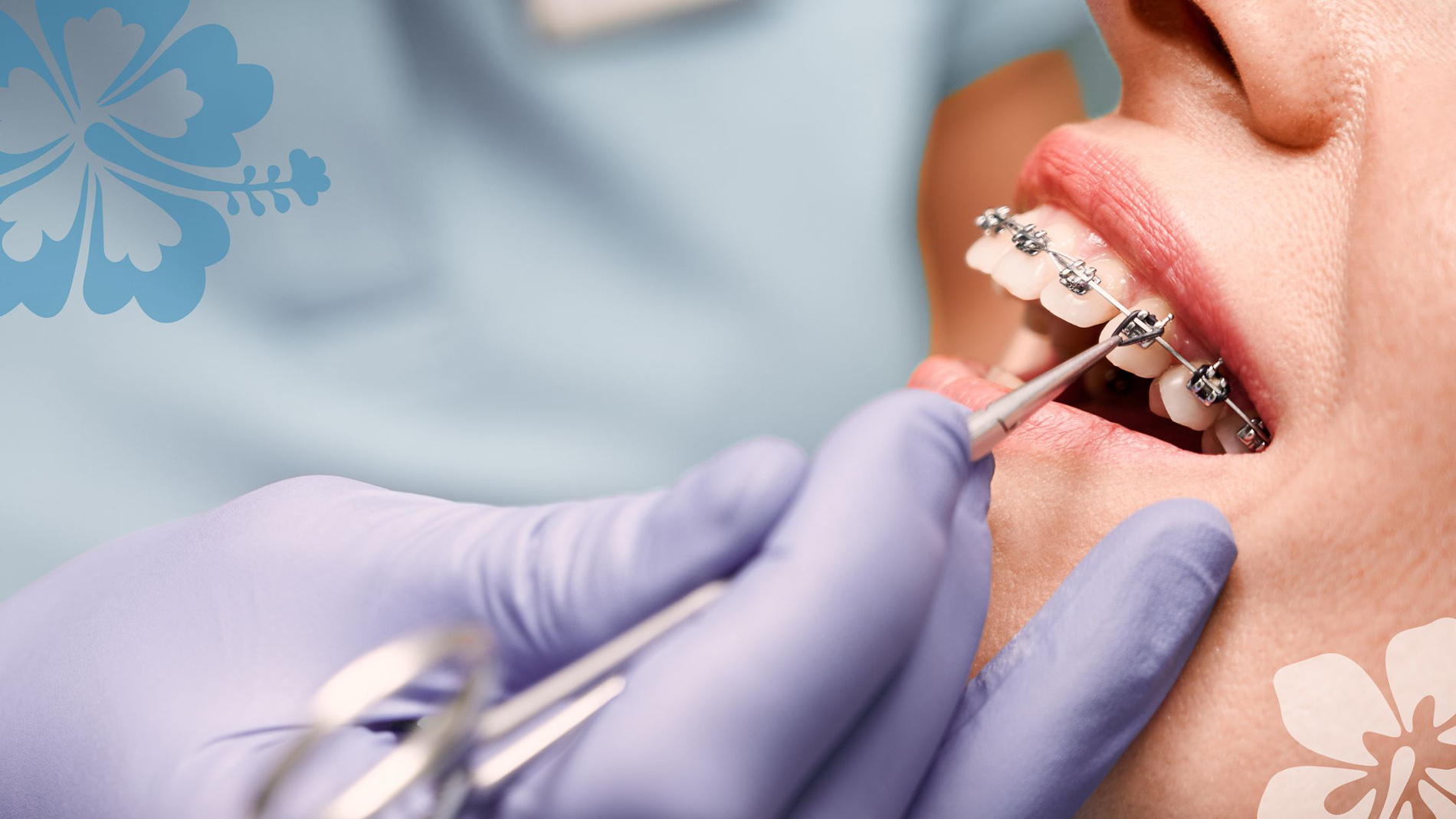
As mentioned, you should not experience severe pain during your braces treatment. Pain is not common and can indicate an issue with your braces that you should have examined by your orthodontist. Even serious discomfort, such as pain from a loose wire irritating the inner cheek, should be addressed immediately to fix the issue and avoid losing treatment progress.
Discomfort During Braces Removal and Retainer Placement
The braces removal is not generally painful. Most patients just feel relief as they get to see their new, beautiful smile!
The first step of removing braces is removing the brackets attached to your teeth and scraping off the glue. The metal bands around your molars will be loosened and removed along with the wire that connects the brackets and bands. This is not painful but can be uncomfortable; the process usually takes about 30 minutes or less.
After your braces have been removed, you will be fitted with retainers. Retainers are created with an impression of your teeth in their ideal position and serve to keep teeth in this position. This is an essential part of maintaining the new alignment of your teeth. Like any other orthodontic process, fitting and wearing retainers can be slightly uncomfortable at first, but any discomfort should pass quickly.
Removable Retainers
Removable retainers are either clear and plastic or wire and acrylic. Usually, after about six months, you will only need to wear your removable retainer at night, but until your orthodontist clears you, you must wear it 24/7. If you don’t, your teeth could shift and reverse the progress you made during your braces treatment.
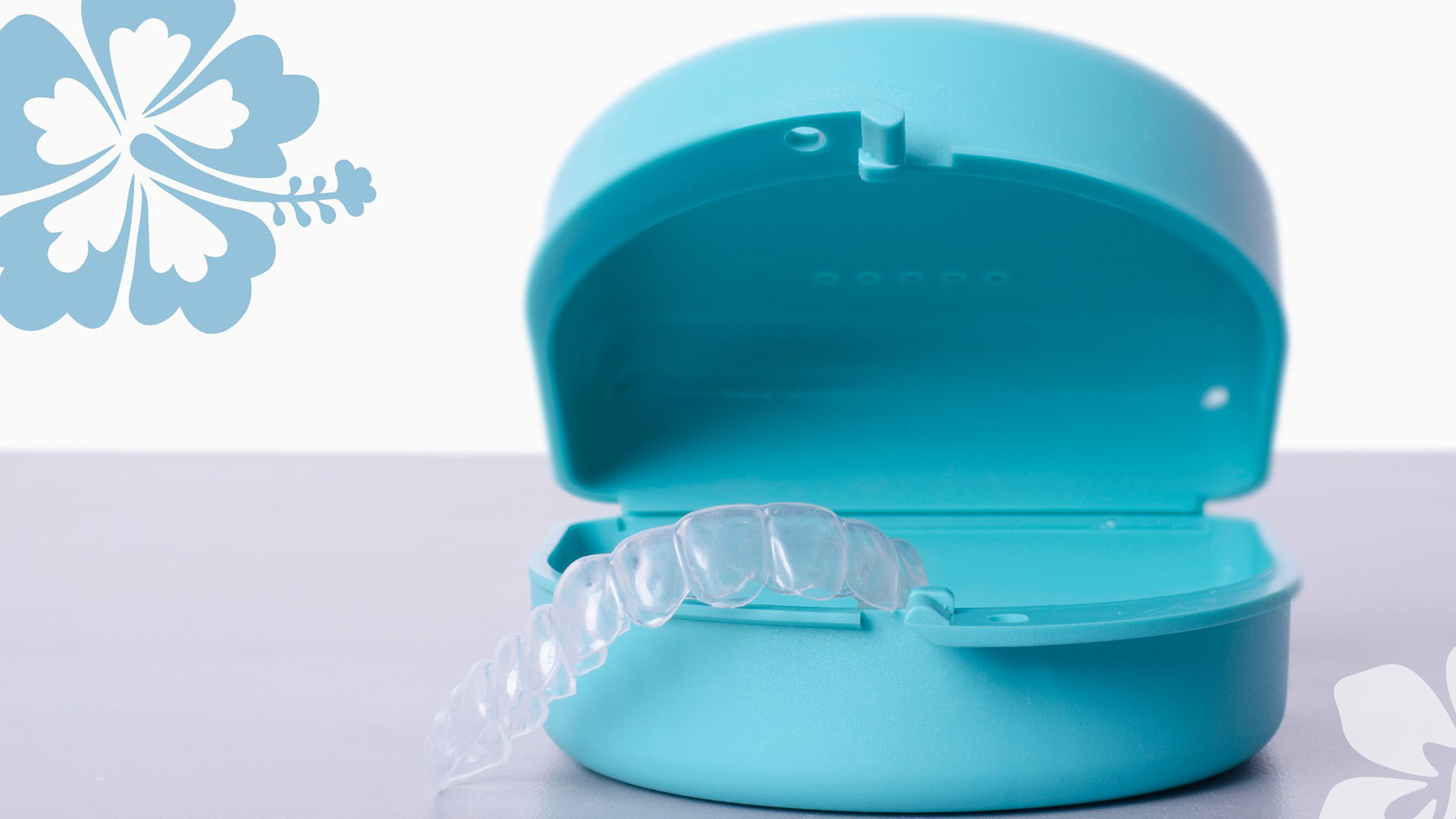
If you are wearing your retainer as instructed by your orthodontist, you should not feel any tightness or pressure when putting it in place. If you notice it has begun to feel tight or uncomfortable, you might need to wear it more often.
Bonded Permanent Retainers
Bonded permanent retainers are made of metal wire bonded to the back of your teeth. These are permanent and maintain alignment without having to remember to wear a retainer. While these can be uncomfortable initially, once your mouth has become used to them, you won’t even feel them.
What Should I Do If My Mouth Is Uncomfortable From My Braces?
If you experience discomfort during your braces treatment, there are some remedies you can try to alleviate the issue.
Remedies depend on the source of your discomfort, but can include:
Over-the-Counter Pain Medications
Medications that can help reduce pain and inflammation include ibuprofen (Advil or Motrin) or acetaminophen (Tylenol). Simply follow the dosage instructions on the packaging. OTC pain meds can help you address any discomfort from braces pressure, mouth irritation, and more.
Oral Anesthetics
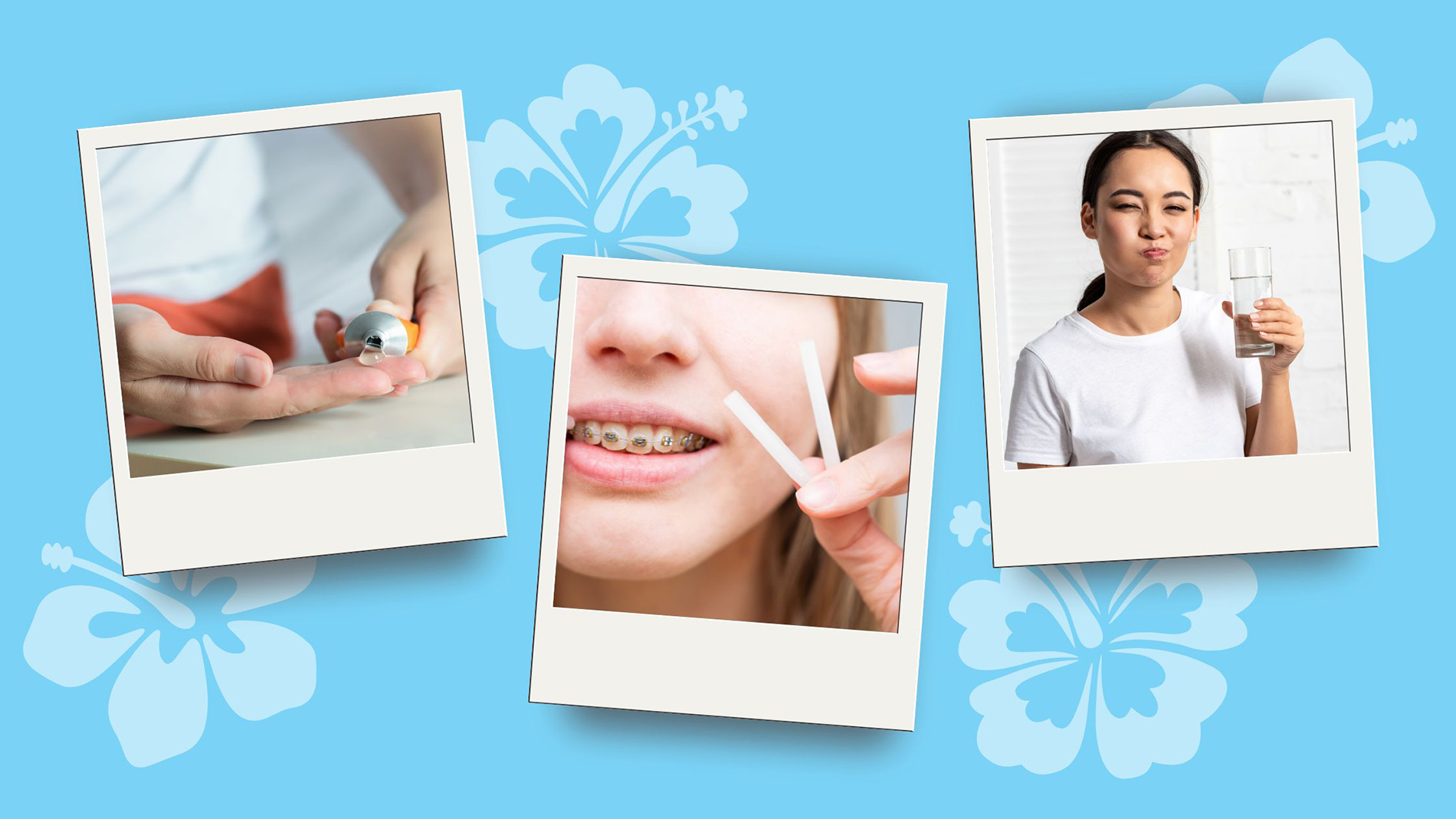
Over-the-counter gels or ointments like Orajel or Anbesol can be applied directly to an area of concern. They can be used to numb the areas of your mouth that are sore. Oral anesthetics are most effective for addressing irritated skin in your lips and cheeks or gum pain associated with initial braces placement.
Orthodontic Wax
During your treatment, your orthodontist will apply orthodontic wax to create a barrier between the wires and your mouth. This creates a smooth surface and protects the inside of your cheeks, lips, and gums from being rubbed raw. You can do this at home if soreness persists, but be sure to notify your orthodontist if your pain is caused by loose wires or brackets.
Saltwater Rinse
Saltwater can be an effective home remedy for any lingering irritation. Simply mix a teaspoon of salt into a glass of warm water and rinse your mouth with the solution for about 30 seconds before spitting it out. You can repeat this several times a day, especially after meals, to reduce irritation.
Eat Soft Foods
Eating soft foods can be both a preventative measure and a remedy. Sticking with soft foods such as yogurt, mashed potatoes, smoothies, soups, scrambled eggs, and pasta instead of crunchy or hard foods can prevent discomfort. Cold foods can help numb your mouth and reduce pain.
Consult With Your Orthodontist
If the pain persists or has become severe, you should contact your orthodontist. There might be an issue with your braces, such as a loose wire or bracket, that needs to be fixed. Addressing the issue immediately can help you avoid continued pain and prevent losing treatment progress.
An Alternative to Braces: Invisalign
While discomfort associated with traditional braces is typically minimal, you may simply not want to risk discomfort. If this describes you, an alternative treatment method known as Invisalign may be a better option. Unlike braces, Invisalign does not use wires and brackets to put pressure on the teeth; instead, it uses a series of custom clear aligners to gently move teeth into place with less pressure.
These flexible plastic aligners can be removed for eating and brushing. As a result, they are also more convenient. They also cause less irritation to the gums and cheeks than traditional braces.
How Does Invisalign Work?
Invisalign treatment begins with a consultation, just like any other orthodontic appliance. Once approved, a 3D imaging system will take a series of images of your mouth. Specialists examine these images and use them to create a series of aligners made specifically for you. You’ll wear them for about 22 hours per day, which will serve to progressively move your teeth into the correct positions.
Depending on your treatment plan, you will swap out each set of virtually invisible SmartTrack material aligners approximately every two weeks. Each aligner slowly moves your teeth into position until the next set becomes necessary. Treatment typically takes around 9-15 months, with anywhere from 18 to 30 different aligners.
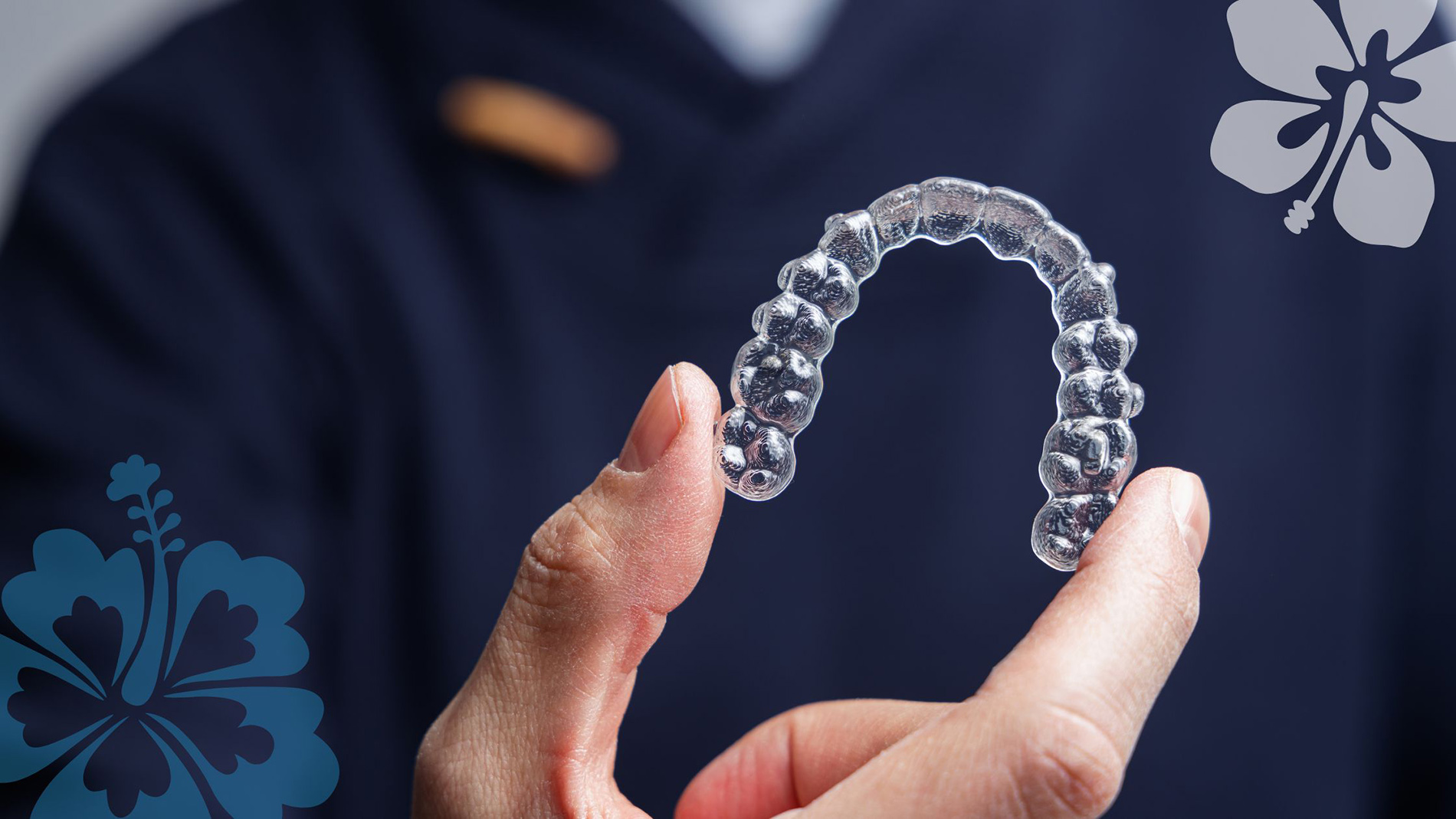
Benefits of Invisalign
Invisalign has many benefits, including:
- No uncomfortable wire or metal in your mouth
- No visible braces making it an attractive choice for anyone who prefers discreet treatment
- Removable for eating, drinking, brushing and flossing
- Predictable outcomes due to the 3D imaging technology that plans treatment from start to finish
- Fewer office visits, which saves you time and money
- Minimal impact on daily life
- Quick and reliable treatment
Adults often choose Invisalign over traditional braces. Aligners can go undetected while still offering the same results as traditional braces. Despite the association between traditional braces and adolescence, Invisalign can be an attractive option for teenagers, as well.
Speeding Up Your Treatment
If you’re eager to speed up your braces or Invisalign treatment and reduce the discomfort or soreness you may experience, there are some options to accelerate the process.
AcceleDent Aura
AcceleDent Aura offers a convenient, hands-free solution to potentially shorten your time wearing braces, all while working alongside your orthodontist to enhance your teeth alignment. This compact device uses micro-pulsation technology to gently nudge teeth into their correct positions at an up to 50% faster rate than braces or Invisalign alone.
The device works in combination with braces or aligners by gently vibrating on the teeth for 20 minutes. It is not painful and vibrates with less force than an electric toothbrush.
PROPEL
PROPEL works by stimulating the bone around your teeth, speeding up the breakdown and inflammation process so remodeling can begin. It creates tiny holes called micro-osteoperforations (MOPs) in critical areas, causing the bone to break down and remodel more quickly. At Robison Orthodontics, we use the PROP Excellerator series in the office, or you can take home the PROPEL VPro5 to use a few minutes every day.
Patients may experience minimal discomfort during and after the procedure, such as mild soreness, tenderness, or sensitivity. However, since PROPEL works on most patients and reduces the time needed for your orthodontic treatment, it can be a popular choice.
Self-Ligating Braces
While self-ligating braces look similar to traditional braces, they use specialized brackets that have built-in clips or doors to secure the archwire. This takes away the need for traditional ligatures and allows the archwire to move more freely within the brackets.
Self-ligating braces generate less friction between the archwire and brackets compared to traditional braces and can come with more comfortable and faster treatment. They are also easier to clean and maintain and require fewer in-office adjustments.
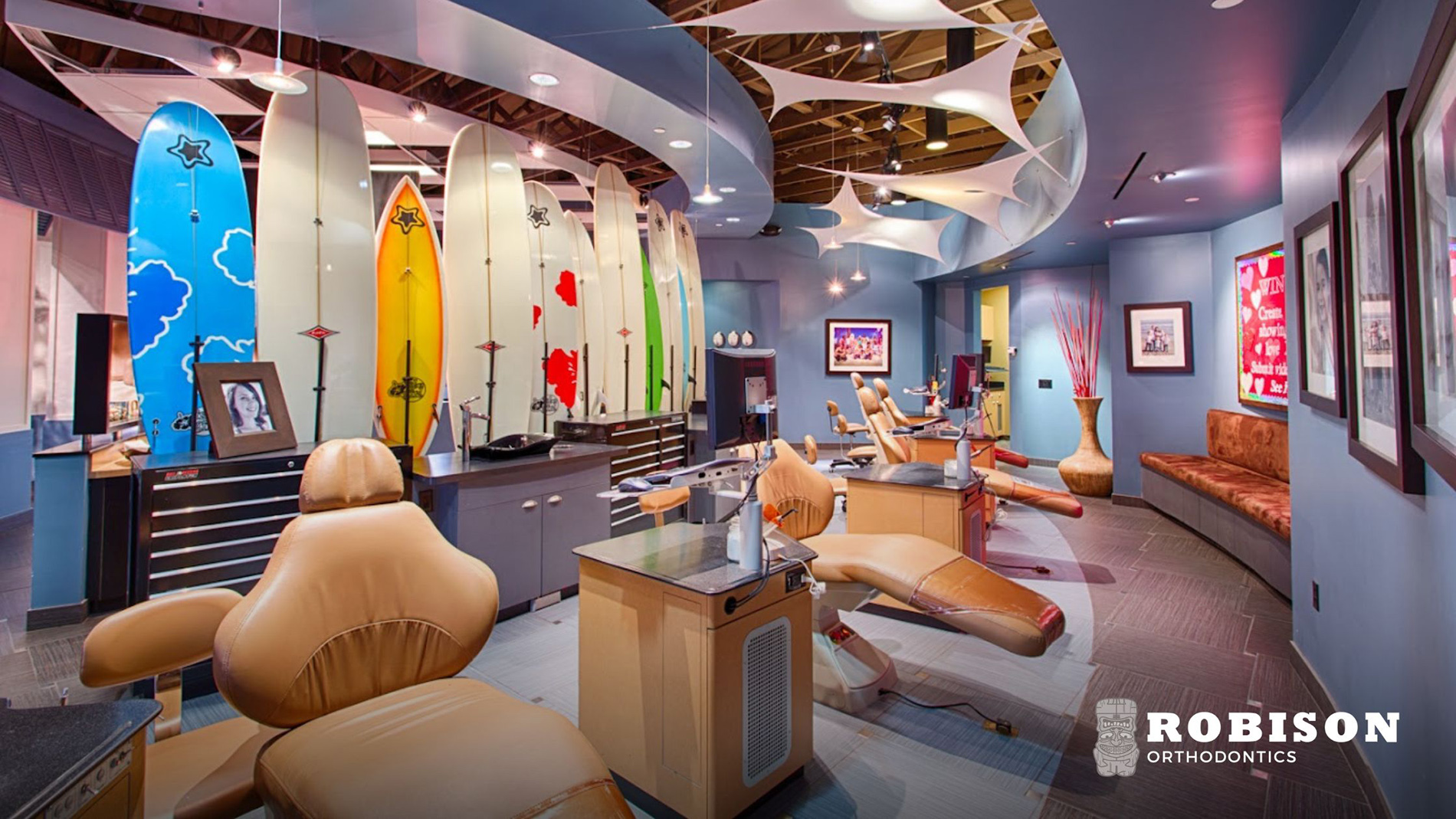
Schedule Your Robison Orthodontics Consultation Today
Don’t let concerns about pain hold you back from achieving the smile you’ve always wanted. If you’re ready to take the next steps towards straighter teeth and better oral health, contact our office today. Whether you’re considering traditional braces or exploring alternative options, a consultation with Robison Orthodontics can help you begin determining the best options for your orthodontic needs.
Sources:
- Braces. (n.d.). American Association of Orthodontists. https://aaoinfo.org/treatments/braces/
- Aligners. (n.d.). American Association of Orthodontists. https://aaoinfo.org/treatments/aligners/
- Retainers. (n.d.). American Association of Orthodontists. https://aaoinfo.org/treatments/retainers/
- How Long Do Braces Take? Duration, Tips & More. (2021, January 11). Healthline. https://www.healthline.com/health/how-long-do-braces-take
- Dr. Tyler Robison. (2023, August 9). The Different Types of Braces. Robison Orthodontics. https://robisonortho.com/blog/types-of-braces/
- Dr. Tyler Robison. (2023, October 9). Understanding Self-Ligating Braces | What Are Self-Ligating Braces? Robison Orthodontics. https://robisonortho.com/blog/self-ligating-braces/
- Dr. Tyler Robison. (2022, October 17). Learn About Braces Removal | Retainer Care. Robison Orthodontics. https://robisonortho.com/blog/expect-after-braces/

Dr. Tyler Robison is an alum of Mesa’s Mountain View High School. He graduated from Brigham Young University before being accepted to the “Top Ten-nationally ranked” University of Louisville in Kentucky, where he earned his Doctorate in Dental Medicine and a Master’s Degree in Oral Biology. He graduated with honors in the top ten percent of his class. Dr. Robison continued at the University of the Pacific in San Francisco, where he received a second master’s degree in dental science and his orthodontic certification.

